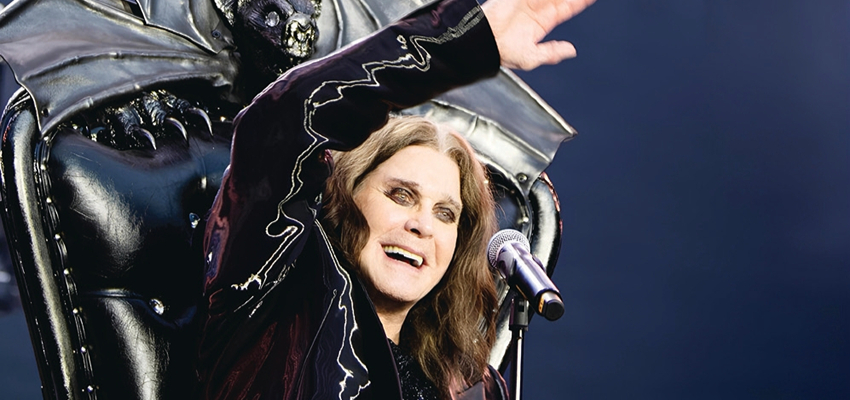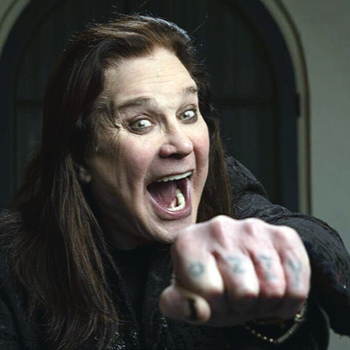Metal God Bids Goodbye

Ozzy Osbourne’s death ends more than a musical era—it closes a case study in reinvention, branding and cultural longevity
Ozzy Osbourne, the Black Sabbath frontman whose name became synonymous with heavy metal, is no more. With his passing at 75, the curtain falls not just on a singular rock career, but on a cultural blueprint that showed how unpredictability, instinct, and contradiction could evolve into something enduring and commercially formidable.
John Michael Osbourne, born in Aston, Birmingham, 1948, his early life followed no script for success. Petty theft, factory jobs, a short stint in prison—and then, almost accidentally, global impact. Black Sabbath, the band he fronted from 1969 to 1979, didn’t just contribute to heavy metal, they gave it form. Osbourne’s eerie, untrained vocals cut through the band’s slow industrial riffs, to create a sound that was visceral and unsettling. Tracks like Paranoid, War Pigs and Iron Man weren’t designed to be hits, and yet they became generational anthems, particularly for young people in Britain and America who felt shut out of the mainstream.
But, it was after Sabbath that Ozzy truly became a business phenomenon. His sacking from the band in 1979, largely due to substance abuse and unreliability, could have finished his career. Instead, it kicked off one of the most successful reinventions in music history. With Sharon Arden, his manager and eventual wife, he launched a solo act that wasn’t just commercially viable, but influential in reshaping what a rock brand could look like.
The 1980 album Blizzard of Ozz, featuring the late guitar virtuoso Randy Rhoads, was more than a comeback. It introduced a new sound, a new aesthetic, and a new generation to Osbourne’s peculiar charisma. Songs like Crazy Train and Mr. Crowley didn’t just expand his fan base, they repositioned him. No longer the sacked frontman of a fading metal band, Ozzy was now the face of a global franchise.
He didn’t stop there. Through the 1980s and 90s, Osbourne built a solo career that combined spectacle with musical credibility. He consistently attracted toptier guitarists Jake E. Lee and Zakk Wylde, and kept finding ways to stay in rotation without diluting his identity. His persona remained wild, unpredictable, darkly comic, but it also became legible. People knew what Ozzy stood for. In branding terms, he’d found a tone of voice and stuck with it.
Then came Ozzfest—launched in 1996 as a travelling music festival for metal and hard rock, it became one of the most successful touring events in America. It flipped the live business model. Instead of being a headliner on someone else’s bill, Osbourne became a platform for others. Ozzfest introduced bands like Slipknot, System of a Down and Disturbed, to mainstream audiences; while embedding Ozzy more deeply into the architecture of the genre he helped build.
But, perhaps the most audacious pivot came in the 2000s, when Ozzy became a reality television star. The Osbournes, MTV’s fly-on-the-wall series was never meant to be strategic, and yet it shifted his cultural position again. Now, he was a household name not because of shock value, but relatability. The swearing, the slippers, the shouting across the mansion, all of it reframed the ‘Prince of Darkness’ as oddly endearing. At a time when musicians were still trying to appear untouchable, Osbourne leaned into domestic dysfunction and turned it into prime time television.
"Of all the things I've lost I miss my mind the most "
-Ozzy Osbourne

The contradictions were the point. He wasn’t polished, but he was consistent. He didn’t sanitise his image, he owned it. And, in doing so he built a rare kind of brand equity, one rooted not in reinvention, but in doubling down on what made him different. In a world that rewards airbrushed personas, Ozzy became a global icon by being unfiltered.
His later years brought new challenges. A Parkinson’s diagnosis in 2020, along with serious spinal surgeries, left him physically weakened and unable to tour. But, even then he continued to release music. His 2022 album Patient Number 9, featuring guitarists like Jeff Beck and Eric Clapton, was critically praised. It didn’t chase youth or modernity, it leaned into legacy. It proved he was still capable of making music that sounded like Ozzy, not a tribute to him.
But, Osbourne’s legacy isn’t just measured in album sales or longevity. It lies in the way he made contradiction commercially viable. He showed that chaos could be structured. That a flawed figure, if consistent in tone and unapologetically himself, could outlast generations of more calculated performers. He built a business out of spectacle, but held it together with real craft, sharp management, and a surprisingly focused understanding of audience connection.
His long partnership with Sharon Osbourne was more than personal—it was operational. She shaped the machinery around him—managing crises, negotiating deals, rebranding setbacks, while never scrubbing away what made the product compelling in the first place. Together, they didn’t just survive the industry; they challenged its assumptions.
Now, with his death, an era ends, not just for heavy metal, but for a model of fame that was lived rather than manufactured. Ozzy wasn’t an avatar or a strategist, he was by his own admission, often confused by the scale of his success. But, that confusion, oddly enough, became part of the appeal. He didn’t sell certainty. He sold experience — messy, loud, absurd and unforgettable.
Ozzy was never meant to last, yet he did — louder, longer, and more meaningfully than most. The industry moves on—the image remains: cross around his neck, arms outstretched, part menace, part miracle. A contradiction, perfected.